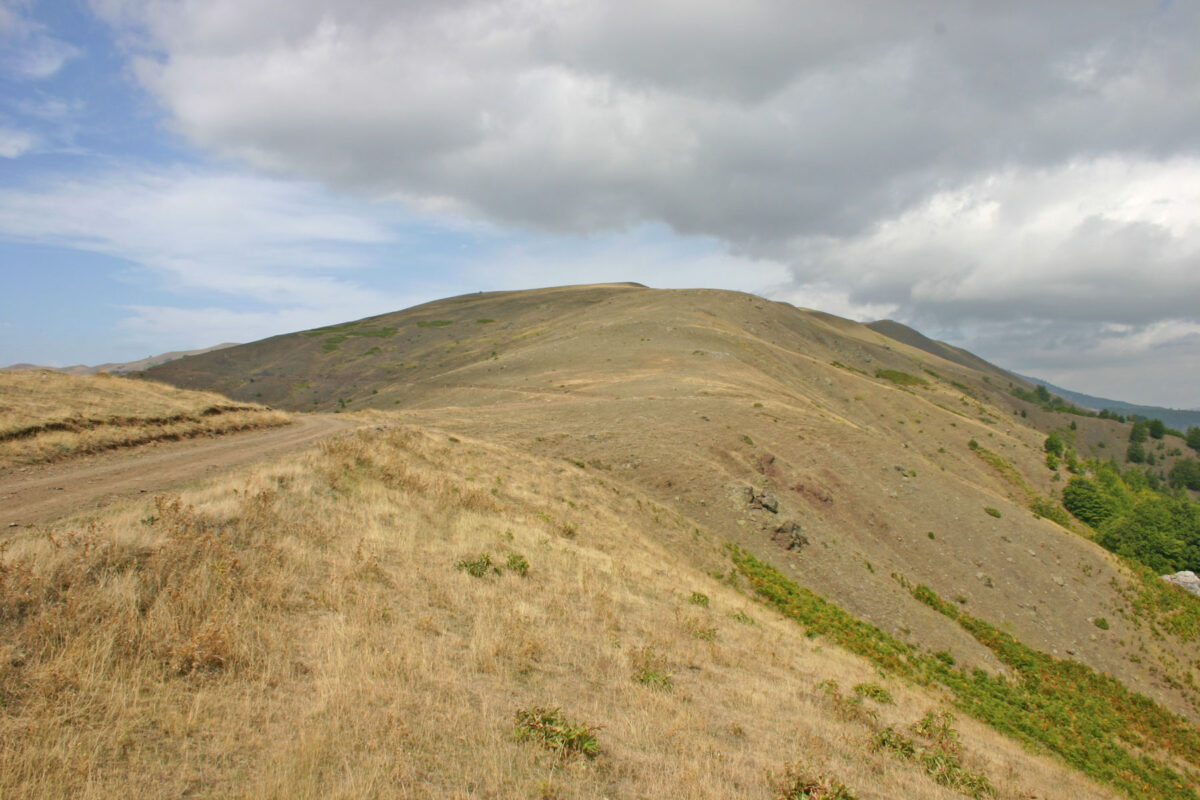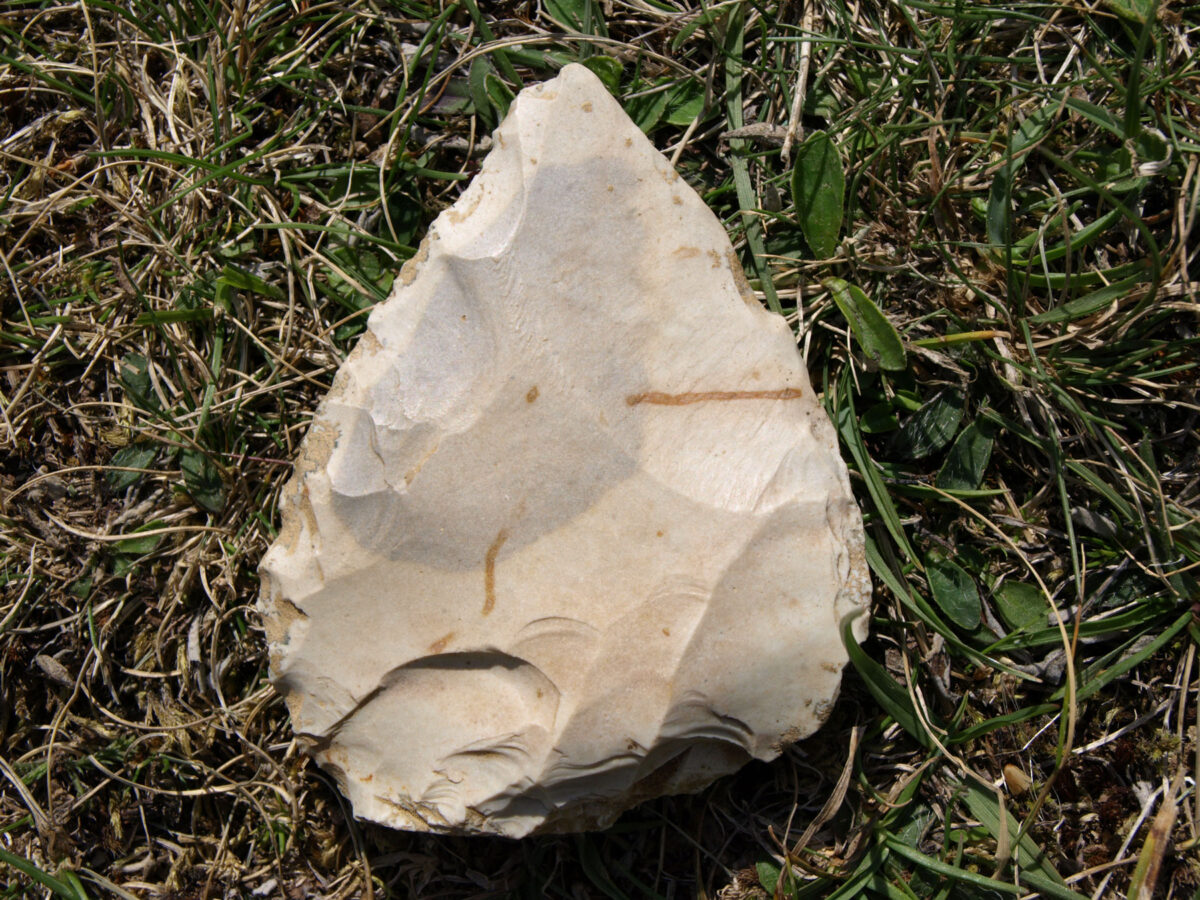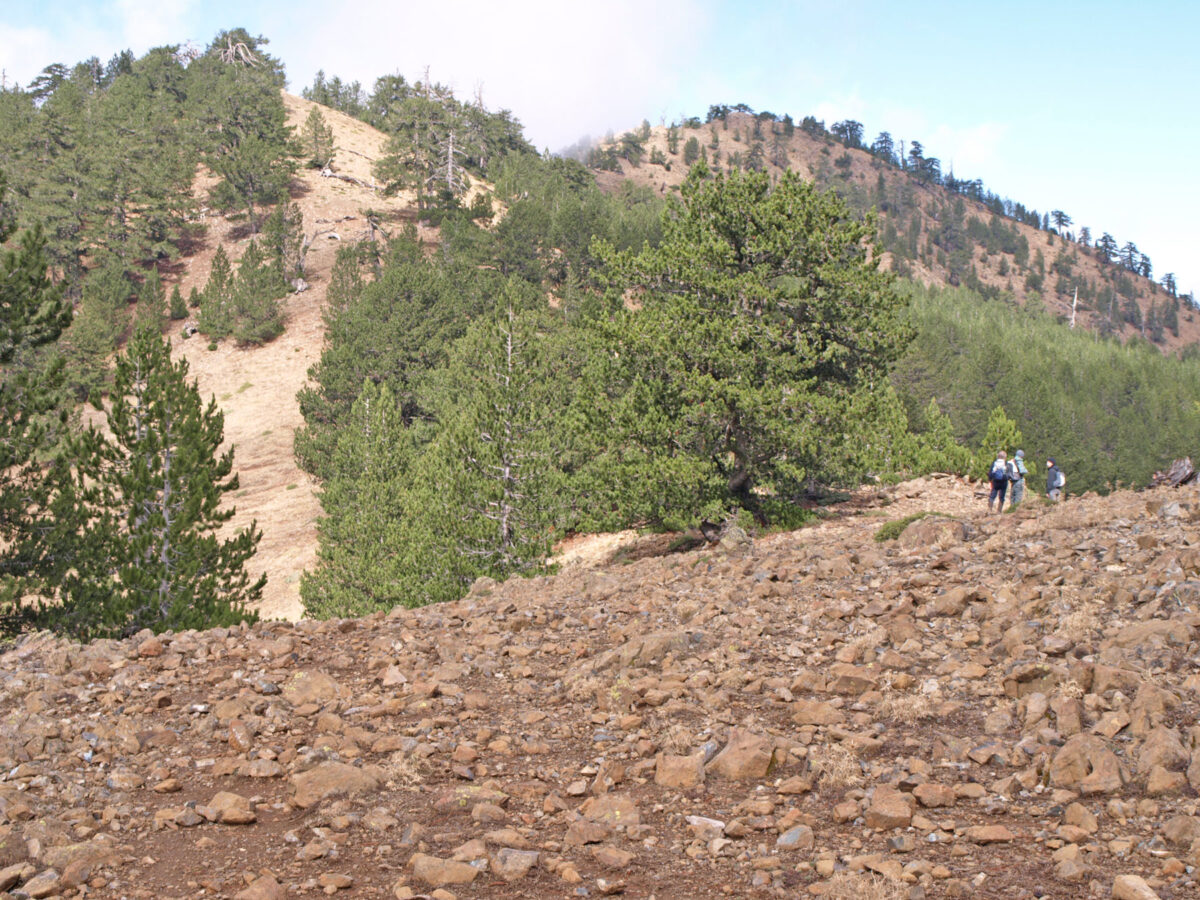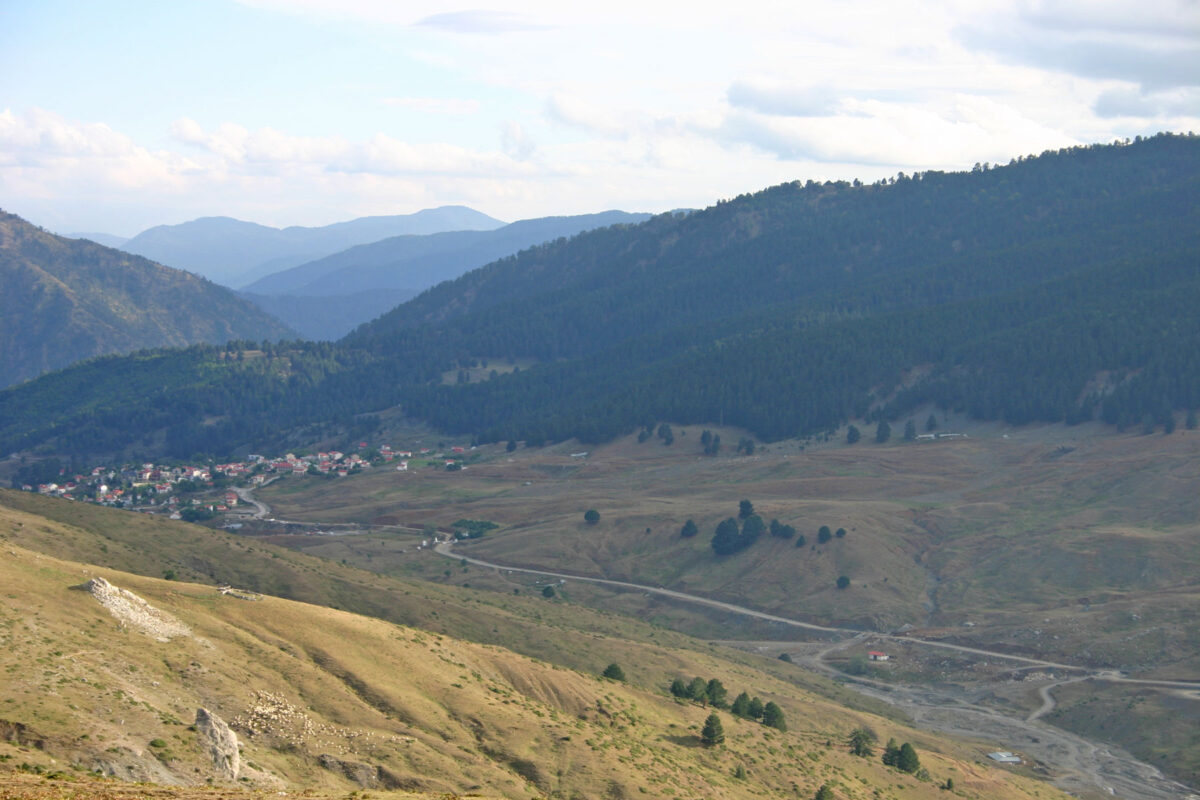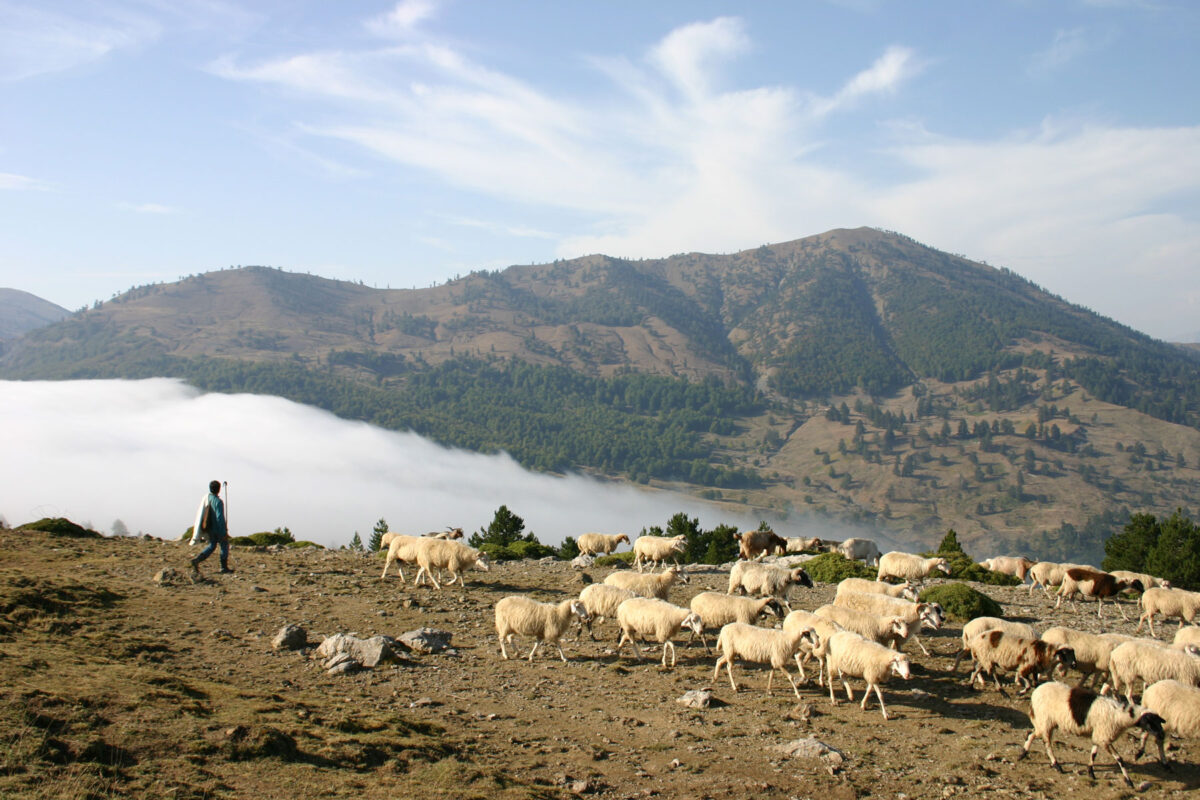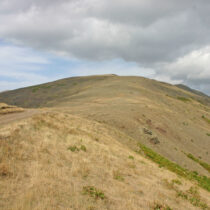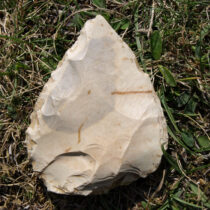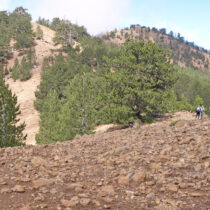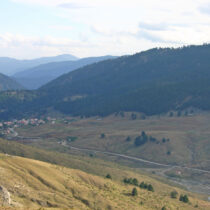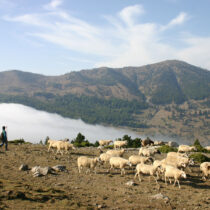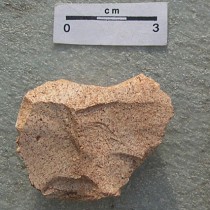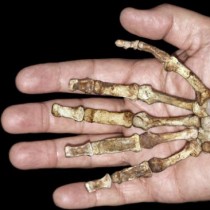When the research project on Smolikas, in the wider area of the village Samarina (Grevena regional unit), began in 2002, none of the archaeologists and academics who had planned it imagined what they would discover: thousands of remains of stone tools belonging to Neanderthals, the most closely related species to humans. The occurrence was impressive. Both the dating – about 60,000 years ago – and the abundance of finds, put the region of Samarina on the “map” with the most important sites of the Middle Palaeolithic Age. At the same time, alpine archaeology was launched; an archaeology of mountainous regions that was missing from Greece until today. This is presented in the documentary “The Alpine Archaeology of Smolikas”, which was made as part of the Research Programme “The prehistoric research of the Aristotle University of Thessaloniki (AUTH) in the NW part of the Grevena Prefecture – The recording of Palaeolithic sites and finds in the area of Samarina”, recently screened in the competition section of the Docfest Chalkida Documentary Festival.
“When the research began, no one believed there were archaeological remains at high altitudes which could be described as mountainous, even alpine, i.e. altitudes that exceed 1,600 m,” Nikos Efstratiou, professor of Prehistoric Archaeology at the AUTH and head of the research programme, tells the Athens and Macedonia News Agency/AMNA. The proposal for the research was made by his friend and colleague Miltiadis Papanikolaou, professor emeritus at the AUTH, who comes from the area. “This challenge was strange and especially the results of the research, which gradually emerged because I had no experience of high altitudes, just like many archaeologists in Greece who do not deal with this type of archaeology. I collaborated from day one with two Italian colleagues, both of them prehistoric archaeologists, who had experience in the alpine regions of Italy; Paolo Biagi professor at the Ca’ Foscari University of Venice, and Elisabetta Starnini, currently professor at the University of Pisa. When we embarked on the research and while surveying the area we were surprised by the first findings we started to come across, which were all on the surface”, he added.
Walking on Smolikas, in mountainous areas and alpine lakes, at altitudes that often exceeded 2,000 m, the researchers began to encounter a multitude of archaeological remains, mainly stone tools. “We found them on the surface, in an area – and this is an important fact – where visibility is extremely good. That is, there are no forests and dense vegetation because we are talking about alpine areas in which trees do not grow above a certain altitude. This was particularly in our favour, because walking in these areas we could locate, see, understand, and collect stone findings. This was the one surprise”, N. Efstratiou explains to the AMNA.
The other surprise was their dating. “These are stone tools – blades, points, cores – which, based on their crafting technology and typology (they belong to the Levallois-Mousterian tradition), belong to the Middle Paleolithic, that is, they date from about 80,000 to 60,000 years ago. These tools were not made by the modern human Homo homo sapiens, but by Homo sapiens neanderthalensis, our closest relative in terms of the biological evolution of the human species,” he says. The research covered tens of kilometers in this part of Pindos, with the findings recorded with absolute precision through modern technology (GPS), as well as the spots from where they were collected. “We found some sites, i.e. places where these Neanderthal groups occasionally stayed to make tools. These spots were preserved because there has been no development in the bad sense of the term, i.e. building activity and destruction of the landscape, therefore also of the archaeological layers. The region has remained as it was thousands of years ago and this was particularly positive because it allowed these sites to survive”, points out Professor Efstratiou.
On some years the researchers climbed to altitudes that reached 2,300 m. “There were findings even there!”, says N. Efstratiou, and gives a general explanation of the “phenomenon”: “We believe that because the climate in Europe had begun getting colder, at some point these Neanderthal groups moved south to survive. Because we are not talking about permanent settlements, but about groups that were constantly on the move for the purpose of hunting or searching for raw materials to manufacture their tools. In other words we are talking about hunter-gatherers. So it seems that they reached Greece and the region of Samarina which is a particularly important geographical point, a crossroads. It is no coincidence that even today the groups of Vlachs living in Samarina choose this spot”, adds N. Efstratiou, referring to another interesting parameter of the research, that of ethnography. “Through a controlled proportional relationship, we can use Vlach nomadic herders and modern hunters in the Samarina area and observe what they are doing today, what areas they move in, where they look for game… Is it possible that the same ‘simplistic’ working hypothesis was also happening 60,000 years ago? This is also a dimension of the research”, he points out .
Most archaeological data concerns the Neanderthal groups. However, stone tools belonging to later periods have also been found, while there are also findings from the Bronze Age, around 3000 BC, but also later. Nevertheless the majority of finds belong to the Middle Palaeolithic Era. Had by any chance these hominids co-existed with individuals of our species? “This is a big research issue. Of course, research now refers to the coexistence of Homo homo sapiens and Homo neanderthalensis – in fact, not only their coexistence but also their reproduction. Bones have been found in Spain showing that the two species had interbred. However, what we have believed for many years and is more or less true to this day is that Neanderthals lived in the region of south-eastern Europe for tens of thousands of years and at some point for some reason they were replaced by Homo homo sapiens, i.e. by us”, explains N. Efstratiou.
Another interesting element of the research is the existence of glacial deposits in the area, known as moraines to geologists, which are formed during the movement of glaciers. “These are conical formations made of large rocks, which have various breakages and angulations. That is, the ice and low temperatures in Western Macedonia during the ice ages of the planet and certainly before the peak of the Last Ice Age, 20,000 years ago, crushed the stones, forming sharp angles. We are preparing a large scientific article discussing the relationship between the glaciers of the region and the findings. I think it will be very interesting”, points out N. Efstratiou, who also refers to the importance of the finds from the Bronze Age. “We have identified archaeological sites, possibly farms, which we believe were part of the Bronze Age ‘seasonally mobile herders’. For very many years there has been a great deal of controversy as to the time this seasonal migration began of humans and herds; ‘transitional livestock farming’ as it is known. So we found sites that we think should be part of this migration network – meaning that maybe these started from the Bronze Age, in 4000 BC and later; i.e much earlier than many of us thought”, he notes.
And what about the future of alpine archaeology in Greece? If research is carried out in other mountains of the country, will similar findings be found there as well? “It is not certain”, the professor says. “Archaeologists should be involved in field investigations. You can only make discoveries if you go to some mountainous place, if you are a ‘daydreamer’ and decide to investigate, for example, the Pierian Mountains or Rhodope, and use the experience acquired internationally of locating sites, since these hominids were not naïve; they wanted places where there was game, water and raw materials to make their tools. Don’t imagine that the natural environment has changed very much in these thousands of years. The riverbeds may have shifted somewhat and the morphology of the plains has changed because of floods and the accumulation of sediment, but nothing that points to dramatic geological changes has occurred”, concludes N. Efstratiou, who thanked the Ephorate of Antiquities of Grevena and all the agencies that helped in implementing the research – now in the phase of study and publication of the results –, as well as all his colleagues who often in adverse weather conditions and in the midst of the pandemic carried out the field research.
